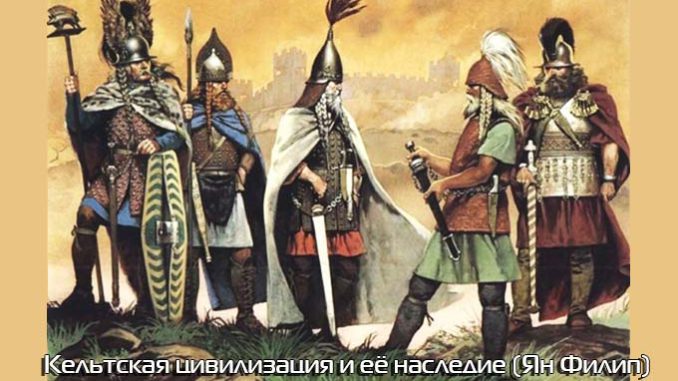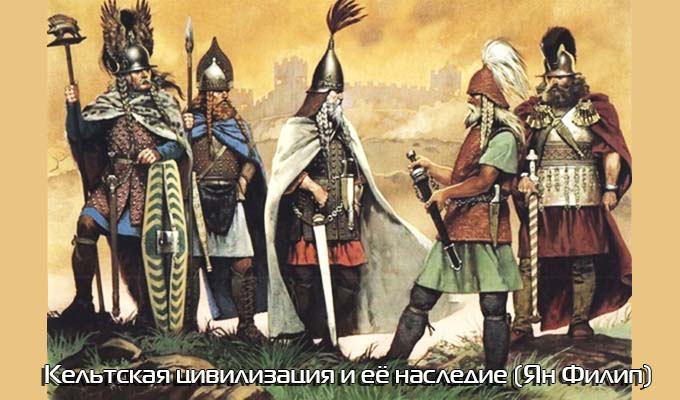
The oldest stone statue of the Latenian period could be considered a figure of a warrior from Grezan (museum in Nîmes), which S. Rheinach considers a Celtic-Greek work, referring to it back to the 5th century. Armor with a belt and, most importantly, with a Celtic bracelet, according to him, are the first step leading to the stone plastics of Gaul and the Rhine region. It’s difficult, however, to date it precisely. The oldest Celtic plastic monuments could have been found even in the Hallstatt period; however, we know mainly small plastics of that time, rather artistic and handicraft works. As the findings prove, Celtic figural plastics of the inner regions are poor, rare, mostly schematic, more or less column-shaped (stele-shaped), with decorative elements. It can be found in France, the Rhine regions and the Czech Republic. It is closely connected with cult and religious notions, and the Celtic gravitation towards ornamentation, which was so vividly manifested especially in the small bronze industry, is also reflected in plastics. Gallic sculptures only rarely reach large sizes. Some of them are very small and obviously were only symbols; often they are reflected in the remnants of old times and even representations of the totemistic character limestone statue of the god with the image of a wild boar on his chest and with a Celtic neck hryvnia – torquet from Effignier in the Marne pool has only 26 cm high and the technique is similar to wooden pastilles. It is Celtic in spirit and sometimes dates back to an older period, but in reality it is more of a late Latenian period, when in the whole Celtic world we find countless boar figures; most of them are small bronze statuettes, perhaps of symbolic purpose, which are bright examples of the standard of production; they are also executed in relief on sculptures or engraved on boreutics. It is only very rare that such statues are of larger sizes that the Bronze Boar of the Nevian-Sully (Loire) is one of these larger bronzes (68 cm high); the Druids obviously hid it during the Roman occupation in the ground on the left bank of the Loire against the main sanctuary on the opposite bank of the river at present Saint Benoit-sur-Loire (Floriacum, Flemish). A bronze statue of a god or hero from the Bourget (Seine and Oise) in the Parisian region, a sitting figure with deer legs (see below the mention of the god Cernunos) is only 45 cm high. Its origin is evidenced by a Celtic neck hryvnia – torquet and blue and white glass insert, typical Celtic, still preserved in the left eye; the hands of the figure are not preserved. The sculpture is bronze, hollow and consists of two parts, front and back. Lantier and Hubert date it to the second or last century BC. It seems to be a relatively late work. The question of different wooden figures, including idols, is more complex. In the Latenian time there were probably many of them, but only small remains of torsoes are preserved. In the sacred well of the Gallic temple district in Monbui (Loire), a wooden statue was found, which was 58 cm high, and the head of another, 22 cm high. These are rough statuettes from the Romanesque times of Gaul, which give us the opportunity to make at least part of the idea of these “simulacra”, as they are called Lucan. Several copies of Celtic sculptures have been found in the Rhine regions and in Wurttemberg. Again, they are mostly mengiro-shaped, pillar-shaped. The obelisk from Pfalzfeld in the Hunsryuk region bears very ancient features. On all four sides it is decorated with reliefs that still resemble the early style of Celtic art; the head is crowned with fish bubbles and the reliefs are S-shaped patterns either connected to each other or make up the motif of the lyre. This sandstone pyramidal column, 148 cm high, may have originally ended with a human head and may date from the 4th or 3rd century. Similar ancient features also carry a head fragment from Heidelberg, made of sandstone, 36 cm wide, which is clearly part of a large object. The stone figure from Holzgerlingen in Württemberg, previously considered Slavic or medieval, should also be attributed to the Latenian period. Her head was originally two-faced, a motif that we had already met in the south of France. Finally, it is worth mentioning a quadrangular sandstone column (preserved height over 120 cm), which was found in 1864 in the Waldenbuch area between the towns of Tübingen and Stuttgart; the upper part of it is not preserved. Ornaments in the form of scrolls and belt ornaments indicate a connection with the Latenian environment, although the general appearance is not very expressive. In this respect it is impossible not to mention the head of the hero made of sandstone, which was apparently found in a sacred place in Mstečské Žehrovice near Nové Strášec (Bohemia), as it is a particularly important find for familiarization with Celtic plastics. To the east of the Rhine regions, it is the only find so far, but of the known plastics to this day, it is the most typical Celtic work from the climax of Celtic power in Central Bohemia, probably in the 2nd century BC. Here too, some southeastern influences may be assumed, but the general appearance, the consistent stylisation of the flat human face, mouth, moustache, eyes and hair – all in general, have expressive Celtic features; the hair frames the head like a crown rather ornamental in nature, and the neck is a typical Celtic torquet. So far, this head is a rare unicum without exact analogies in Gaul and is clear proof that Celtic sculpture has also taken root in Central Europe. This means that the Czech lands had the same cult customs as Gaul and that they were less affected by southern influences. The head was taken away from some stand or an entire statue and comes from one of the centres of Celtic power in Bohemia; and since there were many such centres in Central Europe, and in some areas there are signs of a clear concentration of Celtic burials and settlements, it is to be expected that new similar findings will be made in the future.




Leave a Reply